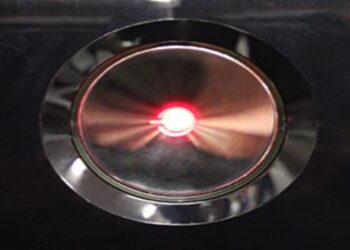Decoding the LFE on Your Subwoofer: A No-Nonsense Guide to Bass Bliss
So, you have a subwoofer. This is the start of something great. Get ready to shake your neighbor’s frames. But first, let’s cover LFE. It’s not a cryptic term. LFE stands for Low Frequency Effects. Understanding this is essential for great sound.
What Exactly is LFE?
LFE is the VIP section for bass. It’s an audio track made for deep, rumbling low frequencies. You feel these frequencies as much as you hear them. LFE tracks are common in Dolby and DTS audio formats. They form the backbone of surround sound. Think of a movie filled with explosions. The impactful bass you hear comes from the LFE channel. Take Dolby Digital 5.1 for example. The “.1” in the 5.1 name? That is the LFE channel. Don’t underestimate its significance. This little fraction holds about 8-10% of the total low frequencies in soundtracks. It gives your home theater that cinematic power.
LPF: Your Subwoofer’s Frequency Bouncer
Next, let’s talk about LPF. This stands for Low Pass Filter. Think of LPF as a gatekeeper for your subwoofer. It controls which frequencies come through. The LPF sets the highest frequency your subwoofer will produce. Typically, AVRs have the LPF for the LFE channel set to 120Hz. However, adjusting it can bring better results. Many suggest lowering that LPF for LFE between 80Hz and 110Hz. Why? Frequencies above this threshold can become too clear. You might start noticing where the subwoofer is located. Lowering the LPF helps keep the bass sound seamless. A warning: don’t go below 80Hz for your LPF. This is a general minimum for most content. Reducing it further risks losing sound quality. If the 120Hz LPF is working for you, feel free to keep it! It’s all about what sounds best in your space.
Crossover Settings: Where Speakers and Subwoofers Play Nice
The crossover setting is key for subwoofer setup. This setting controls how frequencies are divided between your main speakers and your subwoofer. It decides which sound goes to each device. For most home theaters, 80Hz is suggested for crossover settings. It’s even considered the THX standard. At this setting, bass is less identifiable, crafting a richer soundstage. Don’t shy away from experimenting. Some prefer a higher crossover like 120Hz, especially those who have dual subwoofers needing extra bass. Determining the right crossover frequency relies on your main speakers’ size and abilities. Here are some guidelines:
- On-wall or Compact Satellite Speakers: 150-200 Hz
- Small Center, Surround, Bookshelf Speakers: 100-120 Hz
- Mid-size Center, Surround, Bookshelf Speakers: 80-100 Hz
- Large Center, Surround, and Bookshelf Speakers: 60-80 Hz
Keep in mind that these numbers are starting points. Adjust based on how you hear the sound. If you notice gaps or muddiness, adjust the crossover frequency accordingly. Also, if your subwoofer has an LFE input, it’s best to set its crossover knob to the highest position. This lets your AVR manage the crossover, ensuring better integration in your setup.
Gain Setting: Taming the Bass Beast
The subwoofer gain controls the output volume of bass. You can find it labeled as “level” or “volume.” There is no one-size-fits-all gain setting. The goal is to balance the bass with your main speakers. A good starting point is often the middle position on the gain knob. Next, play music or movies with strong bass. Gradually increase the gain until the bass is noticeably louder than the other speakers. At this point, you may have gone too high. Slowly dial it back until the bass fits well with the rest of the sound. You want to feel the bass, not just hear overwhelming noise.
LPF for Subwoofers: Fine-Tuning the Blend
We have discussed LPF for LFE, but subwoofers have their own LPF control too. This filter works with your AVR’s settings to refine bass output further. A common note for setting this LPF is to target around 70% of your main speakers’ lowest frequency, usually around 60-80Hz. Again, start here and adjust by ear. The LPF on your subwoofer helps develop a smooth connection between the subwoofer and your speakers, avoiding muddiness. Make slight changes to find the best point where bass sounds defined and fits within your overall soundstage.
HPF vs. LPF: Filters Demystified
Let’s clarify HPF and LPF differences briefly. We have focused on LPF for subwoofers, allowing low frequencies to pass while reducing higher frequencies. HPFs work inversely. They are often used with tweeters and main speakers to allow high frequencies while blocking lower ones. Small speakers and tweeters can’t handle heavy bass volume. These smaller devices might be damaged or create distortion if faced with low frequencies. So, remember: LPF for bass, HPF for all other sounds.
LFE vs. LFE+Main: To Double Bass or Not to Double Bass?
You may see an “LFE+Main” setting in your AVR. This controls how your AVR processes low frequencies for your subwoofer. Setting to “LFE” only can have its issues. In “LFE” only, if your main speakers are “small,” low frequencies meant for them may not reach the subwoofer. This creates missing low-end information, leading to a thinner sound. Thus, the “LFE+Main” setting is recommended when using analog or PCM sources. This setting makes sure all low frequencies go to the subwoofer. It ensures a full tonal range regardless of source. Unless you have a specific reason for using “LFE” only (and usually you don’t), “LFE+Main” is better for sound quality.
General Subwoofer Settings: A Quick Checklist
Here’s a checklist for your subwoofer settings:
- Set your subwoofer’s LPF to about 70% of your speakers’ bass range or roughly 60-80Hz to start.
- Begin with an 80Hz crossover on your AVR. Adjust based on your speakers.
- If using LFE input, bypass your subwoofer’s crossover or set it high and let your AVR manage it.
- Start the subwoofer gain in the middle position and adjust for balance.
- Use “LFE+Main” for richer bass, especially with analog or PCM sources.
Understanding Bass Frequencies: A Quick Guide
Finally, consider the frequency ranges for bass:
- Sub Bass: 20 to 60 Hz. This refers to deep, low bass you feel, like in explosions.
- Bass: 60 to 250 Hz. This covers musical bass like in drums and guitars.
By knowing these ranges and how they interact with your settings, you are on your way to superior bass sound. So go ahead, test things out, and maximize your subwoofer’s potential! Your neighbors may complain, but your ears will rejoice.










